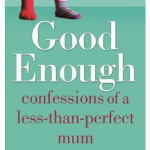When I tell people that my daughters, Greta age nine and Rori age seven, were conceived using an anonymous donor and IVF, the most common response I get is a high five…Sure, there is sometimes the awkward shuffling in the chair reaction – usually by men – but for the most part, people are just incredibly happy that I was able to fulfil my dream of becoming a mum even though I was single.
It wasn’t always that way. The first Australian IVF baby was born 40 years ago, and although Australians were quick to embrace this new technology, there was also fear and opposition. Politicians and interest groups freaked out the public with threats of hundreds of Test Tube Babies that could potentially form an army and take over the world.
Growing up, children of IVF were often ostracised and made to feel weird. “Do you feel normal?”, “How did you climb out of the test tube?”, “Do you have a belly button?”, are some of the questions they report being asked.
Dr Helen Brown, mum to three IVF children, the oldest in her twenties, remembers it well.
Dr Brown was able to ignore the criticism and backlash, she says, because she came from a medical family where issues such as IVF had always been discussed openly. But that changed one day when her daughter went to school.
“My daughter’s English class had a debate and the topic was whether or not we should have IVF,” Dr Brown remembers. “My daughter, I was so proud of her, stood up and said, ‘We are not having this debate, I would not be here without IVF!’”
Dr Brown says that those undergoing IVF often hid it. “I had three friends who were having IVF at the same time and they never talked about it,” she remembers. “One of them will not talk about it even today.”
“It was unbelievably divisive,” says Dr Karin Hammarberg, Senior Researcher at the Victorian Assisted Reproductive Treatment Authority. Dr Hammarberg has had a long career working in the field of IVF and has seen enormous shifts in the attitudes towards assisted reproduction.
“There was a lot of scare mongering going on in the early days,” she says. “It was a very toxic debate.”
The Catholic Church, she says, waged a very strong campaign against IVF.
One woman, Dr Hammarberg remembers, had difficulties with her pregnancy and needed to be taken to hospital. The nearest, was a Catholic hospital.
“That woman was told don’t tell them it’s IVF,” she says. “Women were explicitly told that if they had pregnancies that required special care, not to tell the doctor the baby was IVF.”
Surprisingly, some of the greatest opposition to IVF came from feminists, who saw reproductive technologies as some sort of plot to keep women pregnant and out of the workforce.
“Some left wing feminist groups saw IVF as some sort of paternalistic intrusion,” explains Dr Hammarberg.
The result was a generation of woman who felt guilty at what should have been the happiest time of their lives. “There was a lot of shame for these women because IVF was so contentious and there were really strong views about it.”
One area of IVF that has changed significantly in the last 35 years is the law, especially as it relates to sperm donation. In the 70s and 80s men could donate sperm anonymously. Often clinics would target universities and trade schools and pay young, healthy men to spend five minutes in a room with a girly magazine and a cup, safe in the knowledge that it was totally anonymous.
There was no intended malice. The medical profession and the wider community at that stage simply had no idea how damaging this would turn out to be to donor-conceived kids.
Since then, a great deal of research has shown that information about a person’s biological heritage is essential for healthy human development and emotional wellbeing, and in Australia there is now no such thing as anonymous donation.
 Although I have never met the sperm donor who helped me create Greta and Rori, all his information is stored on a central registry and the girls will have access to that information when they turn 18.
Although I have never met the sperm donor who helped me create Greta and Rori, all his information is stored on a central registry and the girls will have access to that information when they turn 18.
While the stigma may have largely disappeared, Dr Brown says not all developments have been good. These days, she says, assisted reproduction is so routine, it’s almost clinical. While she applauds so many families being able to have children thanks to IVF, she is slightly nostalgic for the way things were with her first experience.
“With my first child, the clinic was this pretty little cottage – absolutely non-scientific – and I had my own nurse. I knew my doctor really well and it was all about making me comfortable and caring about how I was feeling.
“With my next child [fours year later] I noticed a big difference. For one thing, we were now in a hospital, and I saw a lot of different nurses.
“But the last one was completely different. I had to take a number, like you do at the butchers. It was really clinical, like I was having an operation.”
Despite the social stigma attached to early IVF, Dr Brown knew intuitively that what she was doing was a good thing. “I felt I was paving the way for others,” she says. “And like most women doing IVF, my desire to have a family just overtook everything else.”





